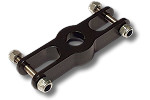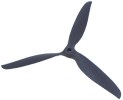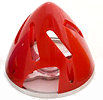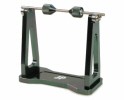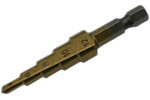 |
4-Max |
Est. 2007 |
||
| <<<
Back |
|
Tel:
01256 782 512 |
|
|
Propellers and Spinners
Please note ALL props should be
balanced before use
Notes on balancing wooden props.
Prop reamers are only suitable for plastic/nylon props, they are not suitable for wooden props.
Wooden props need to be drilled. It's best to use a bench/pillar drill to ensure the hole is at
right angles to the prop. A hand drill can be used with care. Enlarge the hole in small increments
(0.5mm is best). Drill half way through, then turn the prop over and drill through from this side.
Repeat this until you have the required size. Make sure the prop is restrained when drilling so
that the prop cannot rotate and injure you.
To balance wooden props spray clear car lacquer on the lighter side so that it is slightly heavier.
When the propellants in the lacquer evaporates off it should balance horizontally. Check the balance
again when the lacquer is dry and repeat the above if necessary.
Notes on balancing plastic/nylon props.
Ream or drill the prop to the correct diameter if necessary. Make sure the prop is restrained
when drilling so that the prop cannot rotate and injure you. Lightly sand the leading and trailing
edge of the prop to remove any sharp flashings. Place the prop on the balancer. In most cases
one side will drop, this is the heavy side. Rotate the prop by 180 degrees and see if the heavy
side drops quicker or slower. If it drops quicker then rotate the prop by 180 degrees again, if
it drops slower then keep it as it is.
To balance the prop, sand the trailing edge (not the leading edge) of the heavier side of the
prop until the prop balances horizontally. Alternatively you can spray clear car lacquer on the
lighter side so that it is slightly heavier. When the propellants in the lacquer evaporates off
it should balance horizontally. Check the balance again when the lacquer is dry and repeat the
above if necessary.







